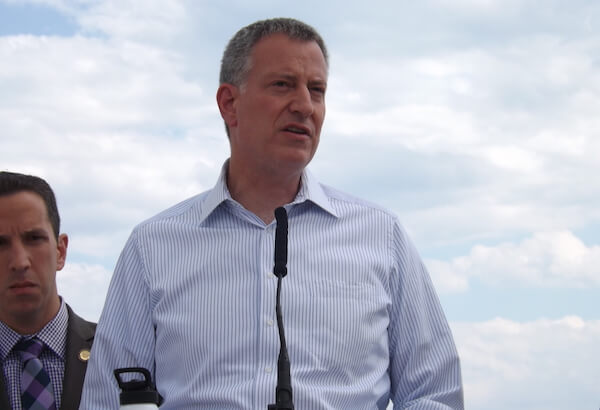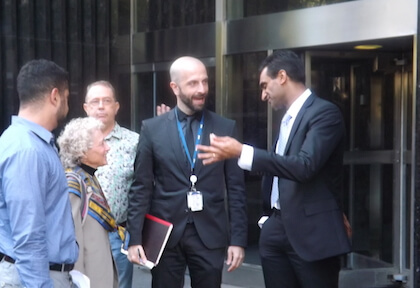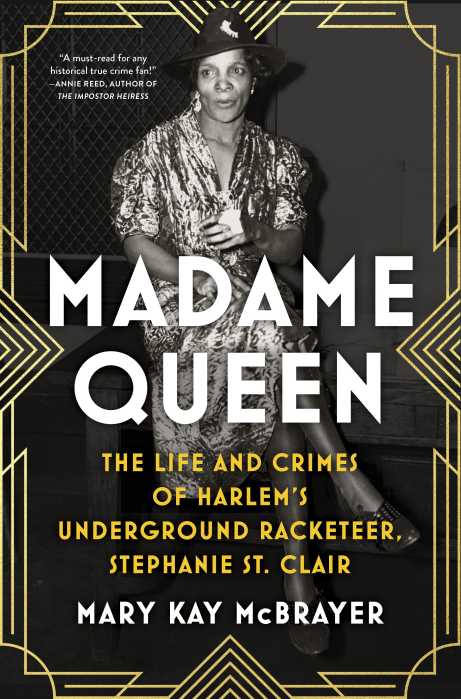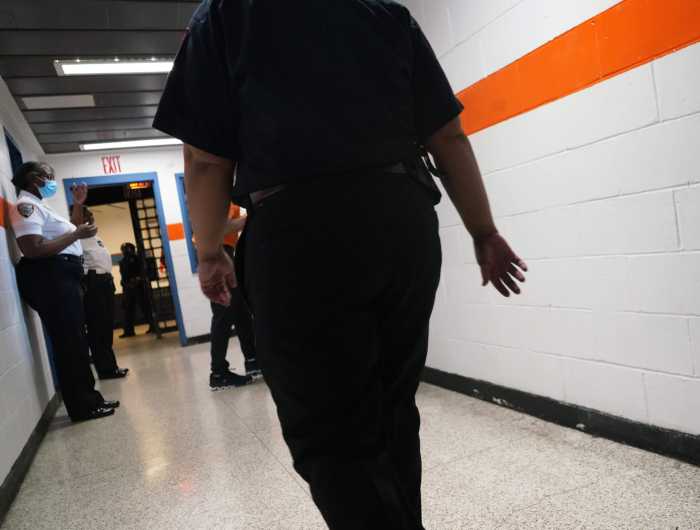An intermediate level state appeals court has upheld a 2011 trial court ruling dismissing Celia Farber’s lawsuit contending she was defamed by an email AIDS activist Richard Jefferys wrote saying that Farber and Dr. Peter Duesberg are “liars” for their assertions that HIV is not the cause of AIDS.
The February 19 ruling upholding Manhattan Supreme Court Justice Louis B. York came from a five-judge panel of the New York Appellate Division, First Department.
The Jefferys email was sent to Walter Fauntroy, who was involved in planning the 2008 Whistleblower Week activities for the Semmelweis Society International. Semmelweis, which describes its mission as assisting physicians who are punished for whistleblower activities or are victims of what it calls “fraudulent (sham) peer review,” was planning to give Farber and Duesberg its “Clean Hands Award.”
Manhattan appeals court agrees AIDS activist did not defame HIV-denying journalist
In 2006, Farber published an article in Harper’s Magazine critical of the medical establishment’s consensus about HIV and the appropriateness of using anti-retroviral medications in combating AIDS. In response, Jefferys, who works at the Treatment Action Group formed in 1992 by activists formerly involved with ACT UP, co-authored an Internet response titled “Errors in Celia Farber’s March 2006 article in Harper’s Magazine,” which asserted she had made 56 factual errors in her piece. Jefferys’ co-authors included prominent researchers and academics from the medical field.
Duesberg, a tenured professor in molecular and cell biology at the University of California at Berkeley since the 1970s, is a longtime leader among AIDS denialists and has been harshly criticized for the public health policies he urged on former South African President Thabo Mbeki at a critical time in that nation’s exploding AIDS crisis.
Jefferys reacted to the news that Farber and Duesberg were being honored by sending Fauntroy an email in which he stated, “These individuals are not whistleblowers, they are simply liars who for many years have used fraud to argue for Duesberg’s long-discredited theory that drug use and malnutrition — not HIV — cause AIDS.” Offering to provide documentation for his assertions, Jefferys warned that including Farber and Duesberg in the Semmelweis event “will, regrettably, discredit and demean your efforts to support the very real issues of recrimination against legitimate whistleblowers.”
In the wake of Jefferys’ email, Farber was dropped from public participation in Whistleblower Week, but her award was presented to her in a private ceremony. She filed suit against Jefferys and others involved in circulating criticisms of her HIV-related writing, focusing particularly on Jefferys calling her a liar. She asserted that a number of criticisms he leveled against her were incorrect.
In his 2011 decision dismissing Farber’s defamation claim, Justice York found that Farber was a “limited public figure” and that the controversy between her and Jefferys was “a matter of public interest.” Both factors supported his finding that to maintain her lawsuit, Farber had the burden of showing Jefferys had made incorrect statements with “actual malice,” which means she would have to demonstrate he made them either knowing they were false or with reckless disregard for the truth.
York found that Farber’s complaint and the documentation she offered in response to Jefferys’ motion for dismissal were insufficient to meet this burden.
The Appellate Division agreed with York, who, its opinion said, “properly determined that plaintiff was a limited public figure because, through her publication of countless articles, she voluntarily injected herself into the controversial debate on whether HIV causes AIDS with a view toward influencing the debate and projected her name and personality before readers of nationally distributed magazines to establish her reputation as a leading authority in this area.”
The appellate panel also found that “Jefferys met his burden of demonstrating that plaintiff could not show by clear and convincing evidence that he made the challenged statements with actual malice or with gross irresponsibility.” Jefferys explained his statements were based on “his expertise and research on HIV/ AIDS for many years, on an article signed by prominent experts in the field, as well as on the many articles in the record which critiqued plaintiff’s 2006 article as being filled with misquotes or misrepresentations.”
The panel noted, as well, that “Jefferys also provided documentation to support why he believed what he wrote about the plaintiff was true and compared in detail plaintiff’s journalism to the articles and studies she cited and explained why he believed her work to contain misrepresentations.”
This case illustrates that robust debate on issues of public importance depends on a wide degree of toleration for argument and rhetoric. As long as somebody is not deliberately publishing falsehoods or making statements harmful to the reputation of others without regard for whether or not they are true, they will be protected from liability for defamation. Farber’s assertion that “Jefferys was biased against her or bore her ill will does not aid her cause,” the panel found, since that is not the issue in determining “actual malice” in the context of free speech constitutional law.
The court also agreed with York’s conclusion that Jefferys’ use of the word “liar” to describe Farber was not subject to legal liability.
“The full content of the statement, including its tone and apparent purpose, and the broader context of the statement and surrounding circumstances lead to the conclusion that what was being read was likely to be opinion, not fact,” the panel found. Generally, legal liability for defamation is limited to factual assertions. As a result, the appellate court concluded York acted appropriately in dismissing the case rather than subjecting Jefferys to discovery and trial on the defamation claim.


































